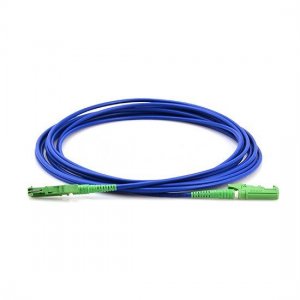
# Fiber MTP Cable: High-Density Connectivity Solution for Data Centers
## Introduction to Fiber MTP Cables
Fiber MTP cables have become an essential component in modern data center infrastructure. These high-performance cables offer a reliable and efficient solution for high-density fiber optic connections, enabling faster data transmission and improved network performance.
## What Makes MTP Cables Special?
The MTP (Multi-fiber Termination Push-on) connector system represents a significant advancement in fiber optic technology. Unlike traditional single-fiber connectors, MTP cables can accommodate multiple fibers in a single connector, typically 12, 24, or even more fibers. This design dramatically increases connection density while reducing cable clutter in data center environments.
Key Advantages of Fiber MTP Cables
1. High-Density Connectivity
MTP cables provide the highest fiber count per square inch of rack space, making them ideal for space-constrained data centers. A single MTP connector can replace multiple traditional connectors, simplifying cable management.
2. Superior Performance
These cables support high-speed data transmission rates, making them perfect for 40G, 100G, and even 400G Ethernet applications. Their low insertion loss and high return loss ensure reliable signal quality.
3. Easy Installation and Maintenance
The push-pull design of MTP connectors allows for quick and tool-less installation. Their modular design also simplifies maintenance and reconfiguration of network infrastructure.
Applications in Data Centers
Fiber MTP cables are widely used in various data center applications:
- High-speed backbone connections between switches and routers
- Storage area networks (SANs)
- Data center interconnects (DCIs)
- High-performance computing (HPC) environments
- Cloud computing infrastructure
Choosing the Right MTP Cable
When selecting MTP cables for your data center, consider these factors:
| Factor | Consideration |
|---|---|
| Fiber Count | 12-fiber is standard, but 24-fiber options are available for higher density |
| Connector Type | Choose between male or female connectors based on your requirements |
| Cable Length | Select appropriate lengths to minimize slack while allowing for future reconfiguration |
| Performance Grade | OM3, OM4, or OM5 for multimode; OS2 for single-mode applications |
Future of MTP Technology
As data centers continue to evolve towards higher speeds and greater densities, MTP technology is keeping pace. New developments include:
- Higher fiber count connectors (up to 72 fibers)
- Improved polishing techniques for better performance
- Enhanced designs for easier handling in dense environments
- Compatibility with emerging 800G and 1.6T Ethernet standards
Keyword: fiber mtp cable
Fiber MTP cables represent the future of high-density connectivity in data centers, offering a scalable solution that can grow with your network requirements while maintaining excellent performance and reliability.




